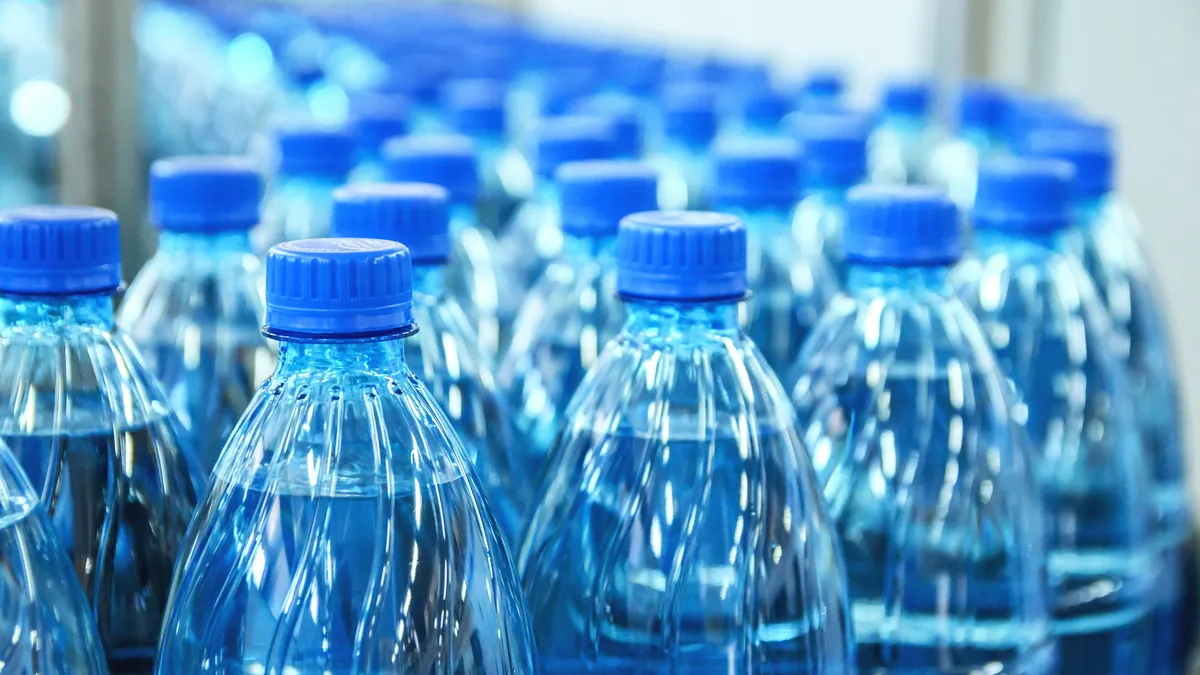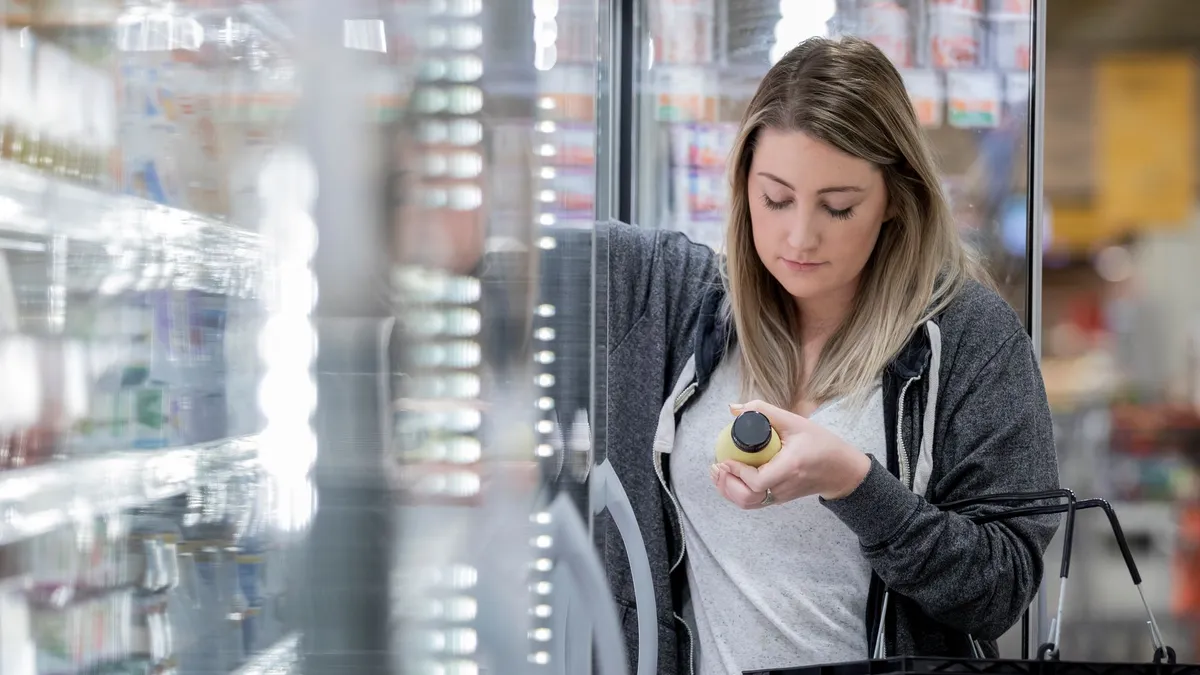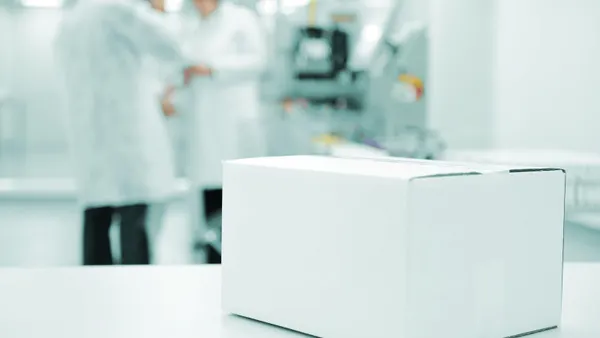Dive Brief:
- The US Plastics Pact released an annual report last week with data on its work toward a circular economy for plastics, including through rethinking packaging design. It reflects varied progress and suggests that some goals will not be realized by their 2025 target.
- Since its 2020 inception, the consortium met a short-term goal of defining a list of problematic and unnecessary materials that it aims to eliminate from plastic packaging by 2025. Other targets — like a goal to make 100% of plastic packaging reusable, recyclable or compostable — appear unlikely to be met by 2025, said Executive Director Emily Tipaldo.
- Still, Tipaldo heralded USPP’s data collection benefits, saying it’s getting companies comfortable with assessing the materiality of packaging “in ways that ESG reporting isn’t even asking.”
Dive Insight:
The US Plastics Pact was formed in 2020 by The Recycling Partnership and the World Wildlife Fund as part of the Ellen MacArthur Foundation’s global network. Participants in the pact, which are referred to as “activators,” include a mix of consumer packaged goods companies and retailers, MRF operators, governments, reclaimers, nonprofits, trade associations and more. And earlier this month, USPP named an inaugural cohort of reuse catalyst partners as it seeks to support reuse and refill solutions.
The newly released 2021 annual report reflects participation through April 2022, with activators involved accounting for 37% of plastic packaging on the U.S. market by weight.
“Much is the same as we reflect on 2021 data,” Tipaldo wrote in the report, noting “cascading fallout” from the COVID-19 pandemic and how impacts to manufacturing affected companies’ timelines. “Conceding on 2025 commitments will not foster the support still needed to shake the plastics packaging value chain out of the status quo. We must continue to push the boundaries of collaboration and transparency to build the circular economy for plastics packaging,” she wrote.
As companies consider redesigning packaging, “One thing that I still hear from a number of companies is, ‘we're gonna wait for the infrastructure, and then we'll make the changes,’” Tipaldo said. “It’s this weird chicken and egg thing; you can't wait for the infrastructure. You’ve waited too long.”
It takes time to implement packaging design changes — anywhere from nine months to two years — due to steps like testing and quality assurance, companies and retailers say. Given the time to market, “companies can’t wait — they have to be doing it now,” Tipaldo said.
EMF’s global commitment 2022 progress report named barriers around flexible packaging and lack of infrastructure as some of the key challenges to expanding recyclable, compostable or reusable packaging by 2025, with wide variations in progress among entities that have made commitments. EMF also noted that “reuse ambitions remain limited.”
Designing for reuse continues to be a challenge for many companies, Tipaldo said. “For a lot of them, it’s outside of anything they’ve ever done before. We're trying to work with them on that, [it's just, frankly], a much bigger learning curve than I thought it would be.”
While USPP believes that industry can’t rely solely on policy to drive progress, Tipaldo did say it’s going to take policy passing around extended producer responsibility, deposit return systems, and post-consumer recycled content mandates “to level the playing field a little bit.”
Still, “regulation often winds up as the lowest common denominator, and kind of the floor or baseline. And if you're going to really push things beyond that — if we're truly going to create a circular economy — we can't just rely on one type of regulatory program to do all of that for us,” Tipaldo said. “So we'll still need to have the space and the peer pressure and everything that's involved with the voluntary initiative to help enable folks to see the art of the possible and how they might get there.”
Through 2025, focus areas for USPP include developing a virgin plastic packaging reduction target; supporting reuse innovators; ensuring all PET and HDPE bottles meet recyclability design guidelines; doubling PCR use across rigid packaging; supporting EPR, bottle bill and PCR mandate policies; and help develop the UN Global Treaty National Action Plan.
















